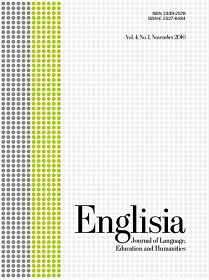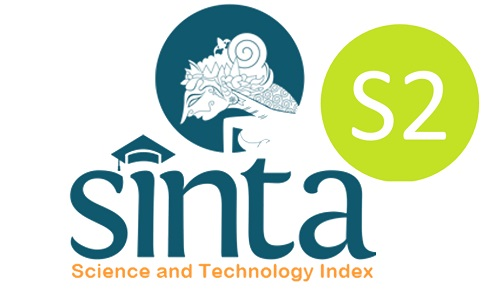ANALYSING THE CHARACTERISTICS OF A PAIR TALK ON AN EDITING TASK ON TWO INTERMEDIATE INDONESIAN LEARNERS OF ENGLISH
DOI:
https://doi.org/10.22373/ej.v4i1.1293Keywords:
interaction, pair talk, LRE, homogenous levelAbstract
Recent studies have paid attention to peer interaction as a means of second language (L2) learning. Interaction among learners in carrying out task is believed to mediate the process of L2 learning. The study therefore observed the nature of a pair talk in an interaction while completing a grammar task. The interaction was recorded and analysed by using language related episodes (LRE) in terms of form, lexicality, and mechanism. LRE was used in order to understand the characteristics of a pair talk at homogenous (intermediate-intermediate) level and to examine the participants’ accuracy in completing the task. The results suggest that even though the pair solved the questions in the task using form-focused LRE (F-LRE) and resolved the task interactively, they were not able to make correct decisions over grammar errors.Downloads
References
Donato, R. (1994) Collective scaffolding in second language learning. In J.P. Lantolf and G. Appel (eds) Vygotskian Approaches to Second Language Research (pp. 33-56). Norwood, NJ: Ablex.
First year exam preparation and practice. Retrieved September 16th, 2013 from http://host.uniroma3.it/linguisti/lcs-ingles/Roma3/Resources_files/botsford%20boyd%20B1%20prep.pdf
Gass, S. and Mackey, A. (2007). Input, interaction, and output in second language acquisition. In B. VanPatten and J. Williams (Eds.), Theories in second language acquisition: An introduction (pp. 175–200). Mahwah, NJ: Lawrence Erlbaum.
Leeser, M. J. (2004). Learner proficiency and focus on form during collaborative dialogue. Language Teaching Research, 8(1), 55-81. doi:10.1191/1362168804lr134oa
Long, M. (1996). The role of the linguistic environment in second language acquisition. In W.C. Ritchie and T.K. Bhatia (Eds.), Handbook of second language acquisition (pp. 413–468). San Diego, CA: Academic Press.
Ritchie, W. C., & Bhatia, T. K. (1996). Handbook of second language acquisition. San Diego: Academic Press.
Swain, M., & Lapkin, S. (1998). Interaction and second language learning: Two adolescent French immersion students working together. The Modern Language Journal, 82(3), 320-337. doi:10.1111/j.1540-4781.1998.tb01209.x
Storch, N. (1999). Are two heads better than one? pair work and grammatical accuracy. System, 27(3), 363-374. doi:10.1016/S0346-251X(99)00031-7
Storch, N. (2007). Investigating the merits of pair work on a text editing task in ESL classes. Language Teaching Research, 11(2), 143-159. doi:10.1177/1362168807074600
Watanabe, Y., & Swain, M. (2007). Effects of proficiency differences and patterns of pair interaction on second language learning: Collaborative dialogue between adult ESL learners. Language Teaching Research, 11(2), 121-142. doi:http://dx.doi.org/10.1177/13621688060707459
Downloads
Additional Files
Published
Issue
Section
License
Proposed Policy for Journals That Offer Open Access
Authors who publish with Englisia journal agree to the following terms:
- Authors retain copyright and grant the journal right of first publication with the work simultaneously licensed under a Creative Commons Attribution License that allows others to share the work with an acknowledgement of the work's authorship and initial publication in this journal.
- Authors are able to enter into separate, additional contractual arrangements for the non-exclusive distribution of the journal's published version of the work (e.g., post it to an institutional repository or publish it in a book), with an acknowledgement of its initial publication in this journal.
- Authors are permitted and encouraged to post their work online (e.g., in institutional repositories or on their website) prior to and during the submission process, as it can lead to productive exchanges, as well as earlier and greater citation of published work (See The Effect of Open Access).









